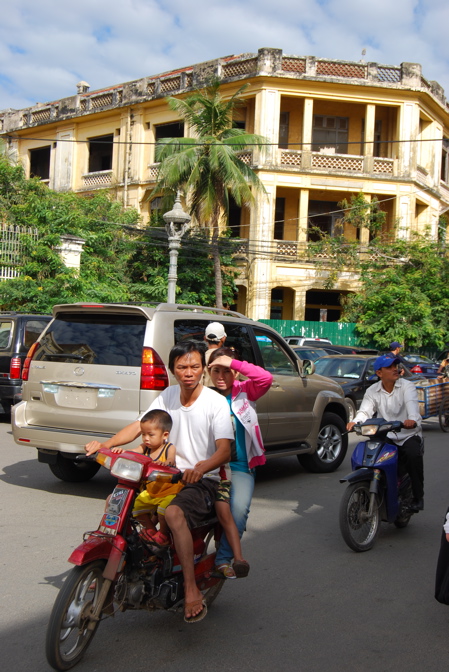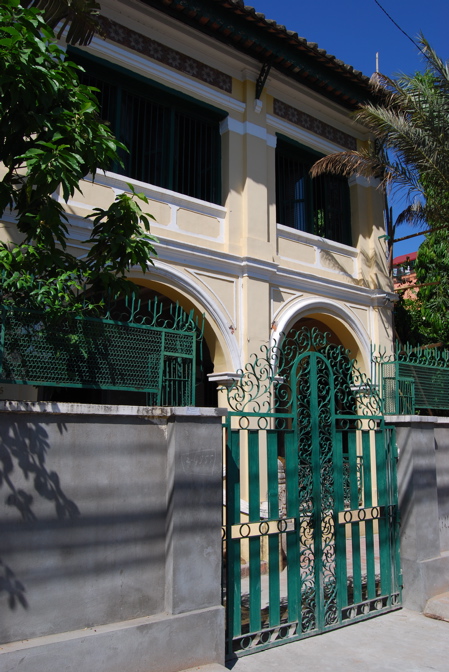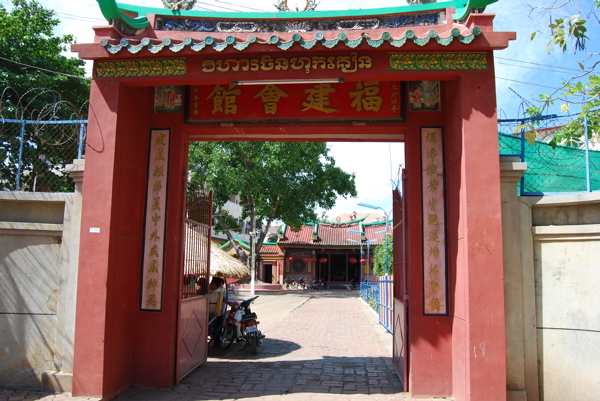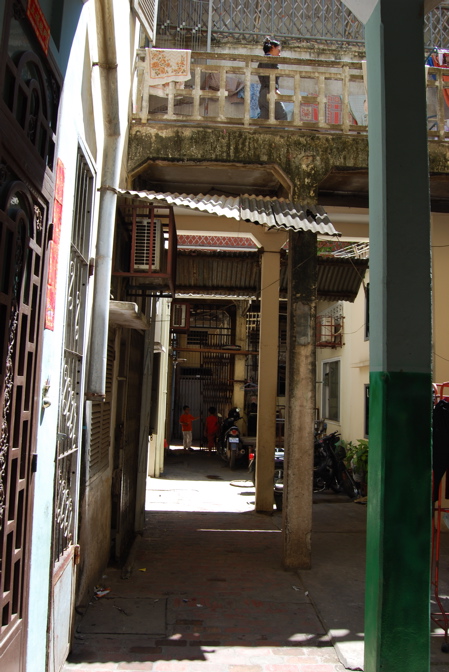These are some photos from the cyclo tour I took in Phnom Penh in March 08 – the tour was organised by www.ka-tours.org – it ran on Sunday mornings. See the website for details – as of 2014 they are still operating. They organise architecture tours of the city, mostly visiting Modernist buildings produced by Khmer architects around/after independence, but this tour took in colonial and Chinese-diaspora buildings.
The tour was conducted by a very knowledgeable and enthusiastic architecture student from the city. As you can see, he took us to places you would never know were there, or alternatively, buildings you might walk past without noticing. Recommended.
I have created a Google Map with the locations visited and linked back to here. (Just follow the links on the names of the buildings.) I wasn’t taking notes as we went around, so the info here is from my own (fallible) memory and the handout map from the tour. The locations of some of the buildings are approximate – I’ve noted which ones. Let me know if you can give a better position for the map.
In the background, the former Central Police Station/Commissariat (now boarded up for development)
This building used to be the Grand Hotel – it has now been partitioned into flats, and there is a restaurant on the ground floor on the corner.
This is the courtyard inside the Grand Hotel – this would have been an impressive lobby area.
This is the Grand Hotel from the outside – as well as the restaurant on the ground floor, you can also see through the window that the first floor has been converted with a makeshift mezzanine to provide more (smaller) rooms.
This Chinese Merchant’s house has been refurbished recently by descendants of the original owner. I don’t have the exact location – if you can help, let me know.
This is the entrance gate of a Hokkienese temple – again, I don’t have the exact location, so if you can help please get in touch.
This and the following picture show part of a Cantonese temple that is hidden down a side alley. The street-plan is very complex here, so it’s difficult to see which buildings were part of the original structure. You can see elaborate detailing around the windows in the building in the upper left of this picture.
Look closely at the roof of the building (behind all the electrical cables) – note the green glazed roof tiles the make up one of the three roofs of the temple.
This and the following two pictures show the Chapel of the Sisters of Providence Hospice. The building used to be a Chinese Christian church. Now it has been subdivided into a maze of residential and business spaces.
This is a typical Chinese Shop House on Avenue Okhna Phlong, which marks the northern limit of what used to be the Chinese Quarter. These buildings combined commercial space (at the front of the ground floor), living space (above the shop), and storage for goods at the back. This picture shows a Shop House in a contemporary conversion, with the ground floor opened out into a conventional retail shop-front.
This Shop House is unusual in that it retains the original ground floor facade – a double front door flanked by tall, narrow windows.
The front and rear parts of Shop Houses are connected by a small courtyard, with a bridging walkway at the upper level. On the ground floor, the rear part of the building would have been warehousing for the shop. On the upper level, the rear rooms were used for food preparation (keeping cooking smoke out of the rest of the living quarters).
This is the former Hotel International (now sadly looking rather worse for wear).
Just around the corner from the International, this colonial building is architecturally unusual because of the arched windows. You can just see to the right of the picture that part of this building has been converted into the Broken Bricks bar – in a city where many buildings of architectural merit are in disrepair, the owners of this bar have created a “distressed” look to their establishment by deliberately smashing walls and plaster (big? clever?).

















